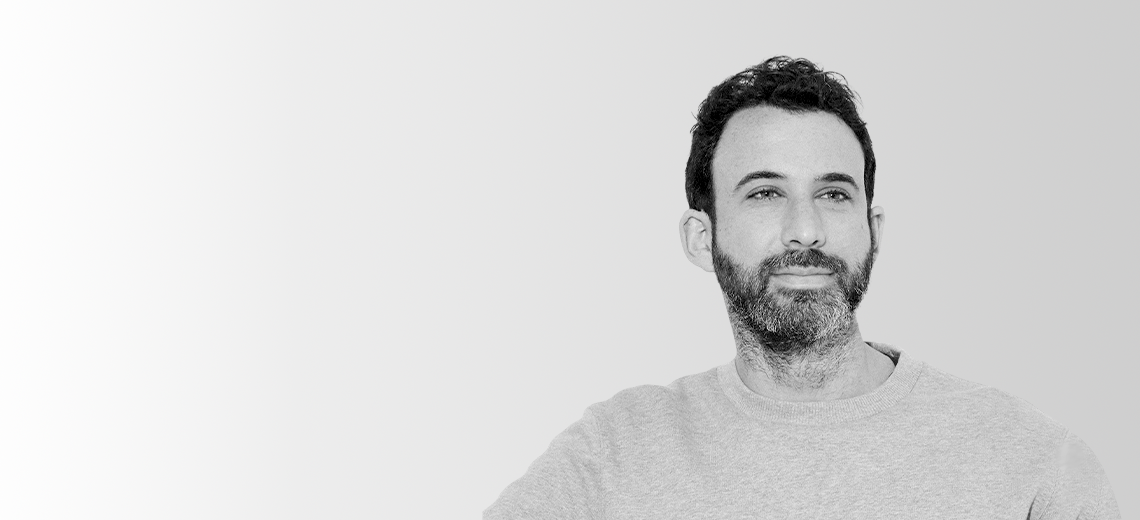This is an episode of the Glossy Fashion Podcast, which features candid conversations about how today’s trends are shaping the future of the fashion industry. More from the series →
Subscribe: Apple Podcasts | Stitcher | Google Play | Spotify
“We have to be OK with riding the wave.” That is the mantra Michael Preysman, founder and CEO of Everlane, has come to rely on throughout Covid-19.
In other words, Preysman has learned that, while the Everlane team can’t control what challenges are thrown at the fashion brand — which was founded with a focus on transparency and ethical sourcing in 2010 — they can control the way that they respond.
From the initial waves of the pandemic to the Black Lives Matter movement to now the Delta variant, getting through the past year can be described as “running a sprint, and it turns out it’s a marathon,” said Preysman, on the most recent episode of the Glossy Podcast.
While the vaccine rollout evoked hope in many for the return of normalcy, Everlane has been honest about the fact that the resulting supply chain issues and labor shortages will take “another 3-5 years” to come back from, said Preysman. Until then, Preysman remains determined to maintain transparency regarding Everlane’s prices and direct-to-consumer business model, overall.
“[Our] $100 cashmere is coming to an end in 2022, because the cost of cashmere is increasing, said Preysman.
However, the typical Everlane customer, who ranges in age from their late 20s to early 30s, is “willing to pay more” for the brand’s environmentally conscious and quality pieces, said Preysman.
Ad position: web_incontent_pos1
Everlane has also adapted the customer experience to be “seamless” online and offline, ensuring that “fitting rooms are the star of the [physical] space,” and that returns and shipping are made easy for customers.
Looking at the bigger picture of sustainable fashion, Preysman remains outspoken that sustainability has “completely been greenwashed,” he said.
“We try to avoid that word [sustainable] and use more factual statements, [like] organic, or clean water, etc.,” and to actively focus on reducing the brand’s carbon footprint. Everlane has done so by committing to the use of recycled materials and more efficient means of transport.
“What we’re trying to show is that you can both … live a great life and have a low environmental impact,” said Preysman.
Below are additional highlights from the conversation, which have been lightly edited for clarity.
Ad position: web_incontent_pos2
Maintaining a focus on material innovation
“We’re trying to use as much recycled material across the board as possible… Our denim line is almost entirely organic, GOTS [The Global Organic Textile Standard] certified, and almost entirely made in Saitex [Vietnam], in the world’s cleanest factory. Long term, we hope to ultimately make it so that you can recycle your denim and we can reuse the same fibers. We do that with cashmere, we do that with wool. The category expansion you’re going to see is pretty limited from here on out, because the focus goes back to that environmental effort… The real goal is not to get to carbon-neutral because we can pay for offsets, but it’s to get to reducing our actual emissions per garment down as much as possible. For example, if you’re looking at virgin cashmere, which we use, we’re trying to move as much to what we have branded as ‘ReCashmere.’ The carbon footprint of a recycled cashmere sweater versus a virgin cashmere [sweater] is 97% lower… We have clear goals of what we need to reduce. We’ve established science-based targets for 2025 [and] 2030, [and we] track everything and then get the numbers to be better or in accordance with the Paris Climate Accord.”
A product-first mentality
“There are two things I would [have had in place in 2020], being candid. One is that we had better people systems in place. The brand has lofty ambitions, and I don’t think we invested enough on the people side. We were investing more on the marketing side… The other place that is an interesting one for a lot of DTC companies is: What is the role of product, and how much do you invest in the product? You see a lot of companies launch with one product or one idea, and then there’s not usually an evolution beyond that… The consumer wants innovation, wants newness — and that product is key to success. We have had periods where we invested a lot in product, and then we’ve had periods where we haven’t invested a lot in product. And looking back, historically, you can tell when those periods were. And we are investing significantly in product today, which will pay [off in] rewards over the next decade… I would encourage anyone to always to put product at the forefront of what they’re doing.”
Reducing Everlane’s carbon footprint
“The first responsibility of any brand or any company is to lower its own footprint. In order to do that, you bring in a group and you do a full-life cycle assessment. The trend nowadays is, ‘Let’s go offset, do some carbon buying.’ And I’m sorry, most of that stuff is bullshit… It’s nice, but it’s an excuse to continue to reap carbon. The question one has to ask is: ‘How do we reduce our carbon footprint?’ That’s the goal of any company [taking] responsibility, because [the] government is not working fast enough… Because this doesn’t affect the rich as much as it affects those without money. The government will move when people with money say they want change. That’s why we solved Covid so fast, because rich people were dying. What we’re seeing now is this massive issue, where if you live in an area like Seattle and you have low income, you live in a place that’s 10 degrees hotter than somebody with money… We have not solved those problems, but we’re moving fast across all of them.”




